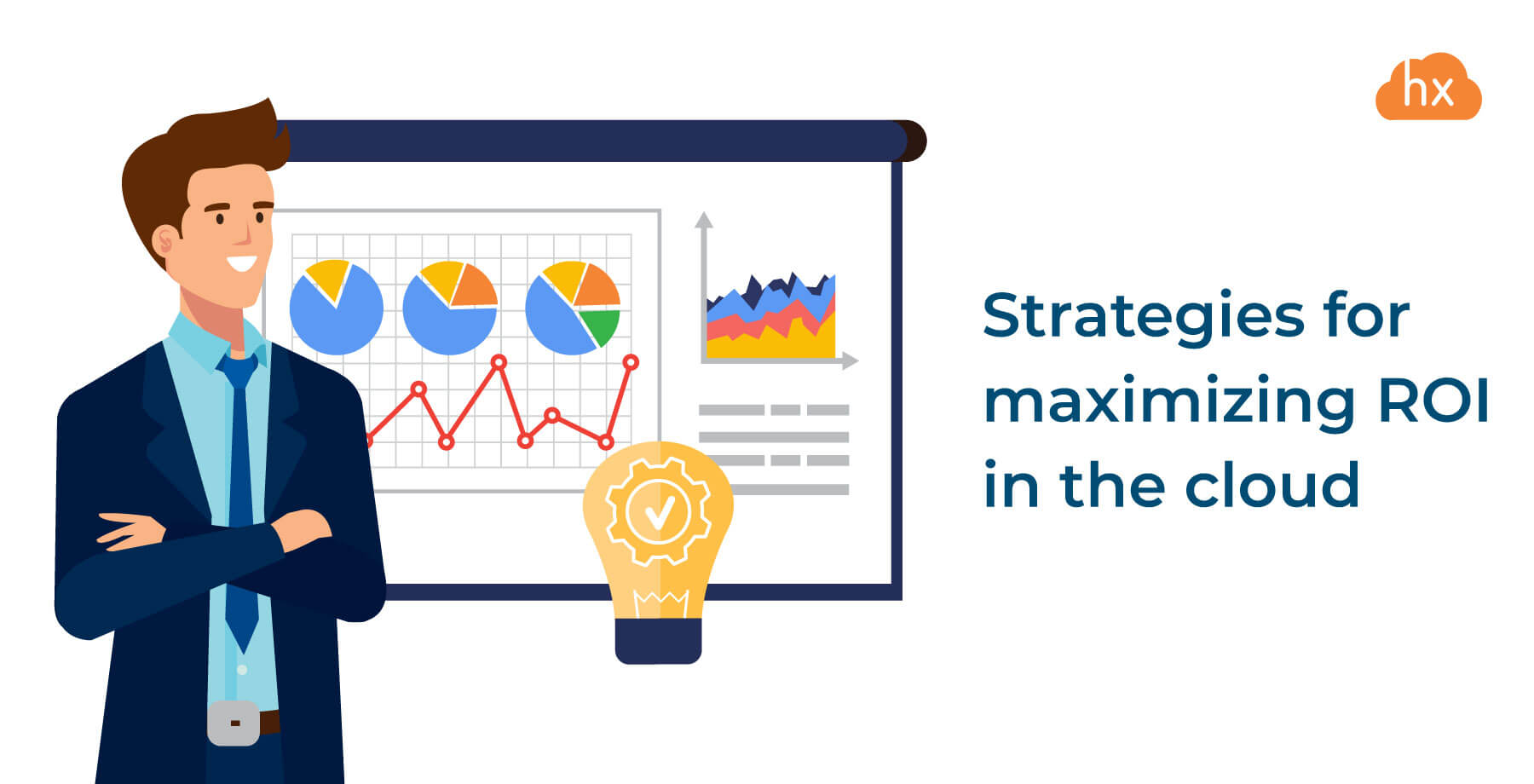
Introduction
Understanding Cloud Infrastructure
In today’s digital landscape, cloud infrastructure has emerged as a cornerstone for businesses eager to enhance their operational efficiency. Understanding this infrastructure is crucial as it encompasses the hardware, software, and network resources required to deliver cloud services. It allows enterprises to store data, run applications, and leverage computing power without the need for substantial on-premises investments.
Consider a mid-sized company that switched from traditional servers to a cloud-based solution. They reduced their physical maintenance costs, accessed advanced analytics, and improved collaboration among teams. Such transformations are at the heart of why cloud infrastructure is indispensable in modern business.
Significance of Maximizing ROI
Maximizing Return on Investment (ROI) in cloud infrastructure is not just ideal; it’s necessary. The benefits of cloud adoption come with costs that can escalate if not managed wisely.
To ensure maximum ROI, businesses should focus on:
- Cost-efficiency: Better resource allocation helps in reducing unnecessary expenses.
- Performance optimization: Enhancing service delivery leads to improved customer satisfaction.
- Strategic planning: Aligning cloud strategy with business goals can drive growth.
Ultimately, investing wisely in cloud infrastructure can yield substantial returns that pave the way for innovation and competitiveness, making it imperative for organizations to focus on these strategies for success.
Evaluating Cloud Infrastructure for ROI
Cost Analysis and Budgeting
To effectively evaluate cloud infrastructure for ROI, a thorough cost analysis and budgeting process is essential. This step involves not just identifying expenses but also predicting future costs based on usage patterns. For example, a tech startup started with a small cloud infrastructure but soon recognized the need to scale. By analyzing their monthly cloud bills and projected growth, they budgeted effectively, avoiding sudden spikes in costs.
When creating a budget, it’s helpful to consider:
- Initial setup costs: Fees associated with migrating to the cloud.
- Ongoing operational expenses: Monthly charges based on usage.
- Potential hidden costs: Fees for data transfers, backups, or additional services.
Performance Metrics and Monitoring Tools
Once the financials are clear, monitoring performance becomes crucial. Employing robust monitoring tools allows businesses to track resource usage and performance metrics against their initial projections.
Consider these effective metrics:
- CPU utilization: Identifies if more resources are needed or if there’s waste.
- Response time: Measures how quickly applications respond to users.
- Downtime statistics: A key factor that impacts customer satisfaction and revenue.
Using platforms like Amazon CloudWatch or Google Cloud Operations can streamline this process, providing insights necessary for optimizing resources and ensuring the highest ROI. By continually assessing these elements, businesses can make informed adjustments to enhance their investment in cloud infrastructure.

Best Practices for Maximizing ROI
Scalability and Flexibility
To truly maximize ROI in cloud infrastructure, embracing scalability and flexibility is non-negotiable. By utilizing a cloud service that scales with your business, organizations can adjust their resources based on current needs without incurring unnecessary expenses. For instance, a growing e-commerce business can effortlessly increase their server capacity during peak shopping seasons while scaling down afterward, ensuring they only pay for what they use. Key considerations include:
- On-demand resources: Enable rapid deployment of additional resources.
- Adjustable pricing: Choose plans aligned with your growth trajectory.
Security and Compliance Measures
Investing in robust security and compliance measures is essential for safeguarding data and maintaining customer trust. Businesses face high costs associated with data breaches; therefore, proactive security practices not only protect assets but also enhance ROI. Essential components include:
- Regular security audits: Identify vulnerabilities and rectify them swiftly.
- Compliance protocols: Maintain adherence to regulations like GDPR or HIPAA to avoid fines.
Automation and Resource Optimization
Lastly, embracing automation can significantly boost efficiency and lower costs. Automating routine tasks, like resource provisioning or backups, frees up IT teams to focus on strategic initiatives. Additionally, utilizing optimization tools can help identify underutilized resources, allowing businesses to repurpose or downsize where necessary.
By integrating these best practices—scalability, security, and automation—organizations can create a strong framework for maximizing ROI and driving continued success in their cloud endeavors.

Case Studies and Successful Implementations
Real-world Examples of ROI Maximization
Exploring real-world examples can provide invaluable insights into effective ROI maximization strategies. One prominent case is that of a global logistics company that transitioned to cloud infrastructure to enhance operational efficiency. By implementing an elastic cloud solution, they reduced their server costs by 40% while improving delivery times significantly. Key achievements included:
- Dynamic scaling: Resources adjusted based on changing shipment volumes.
- Real-time data access: Improved decision-making capabilities across teams.
Another notable example is a financial services firm that leveraged cloud analytics tools. This initiative helped them cut down on data processing time by 60%, leading to faster reporting and better client service.
Lessons Learned and Challenges Faced
While these case studies showcase success, they also highlight challenges encountered along the way.
- Integration issues: Companies often struggled to seamlessly integrate cloud solutions with existing systems.
- Change management: Employees needed adequate training to adapt to new tools, causing temporary productivity dips.
Through these experiences, organizations learned the importance of thorough planning, staff training, and continuous monitoring to ensure a smooth transition and sustained ROI success. By reflecting on both victories and setbacks, companies can refine their approaches to cloud infrastructure investments.

Future Trends and Innovations in Cloud Infrastructure
Impact of Emerging Technologies
As we look ahead, the influence of emerging technologies on cloud infrastructure is undeniable. Innovations like Artificial Intelligence (AI) and Machine Learning (ML) are reshaping how businesses optimize their cloud environments. For instance, a retail company utilized AI-driven analytics to predict customer behavior, leading to personalized marketing efforts that boosted sales by 30%.
Key trends to watch include:
- Multi-cloud strategies: Organizations are increasingly adopting solutions across various providers to enhance resilience and avoid vendor lock-in.
- Serverless computing: This approach allows businesses to run applications without managing servers, simplifying scalability and cost management.
Predictions for ROI Optimization
Looking forward, ROI optimization will become more data-driven and automated. With advanced analytics and machine learning algorithms, companies will gain deeper insights into usage patterns and potential savings. Some expectations include:
- Predictive cost management: Tools that anticipate spending based on usage trends, allowing for proactive budgeting.
- Enhanced performance benchmarks: Leading to real-time adjustments for optimal resource allocation.
By embracing these trends, organizations can not only stay ahead of the competition but also maximize their ROI through informed decision-making and strategic technology investments. As the cloud landscape evolves, adopting these innovations will be crucial for future success.

Conclusion and Key Takeaways
Recap of Strategies and Practices
As we’ve navigated the landscape of cloud infrastructure and its impact on ROI, several strategies have emerged as vital for success. Key practices include prioritizing scalability and flexibility to meet changing demands, implementing robust security and compliance measures to protect assets, and utilizing automation for resource optimization.
For example, the logistics company’s successful cloud transition highlights how dynamic scaling and real-time data access can significantly improve efficiency and cost-effectiveness. Emphasizing the importance of performance metrics and thorough cost analysis has also proven essential in making informed decisions.
Final Recommendations for ROI Enhancement
To further enhance ROI in your cloud infrastructure, consider the following recommendations:
- Invest in emerging technologies: Explore AI and ML to streamline operations and enhance decision-making.
- Regularly assess and adjust strategies: Constantly monitor performance metrics and adapt to industry changes.
- Foster a culture of continuous learning: Equip teams with training on new cloud technologies and practices.
By adopting these strategies and recommendations, businesses can unlock the full potential of their cloud investments and ensure sustained growth and success in an ever-evolving digital landscape.
1862303358-1170x731.jpg)
